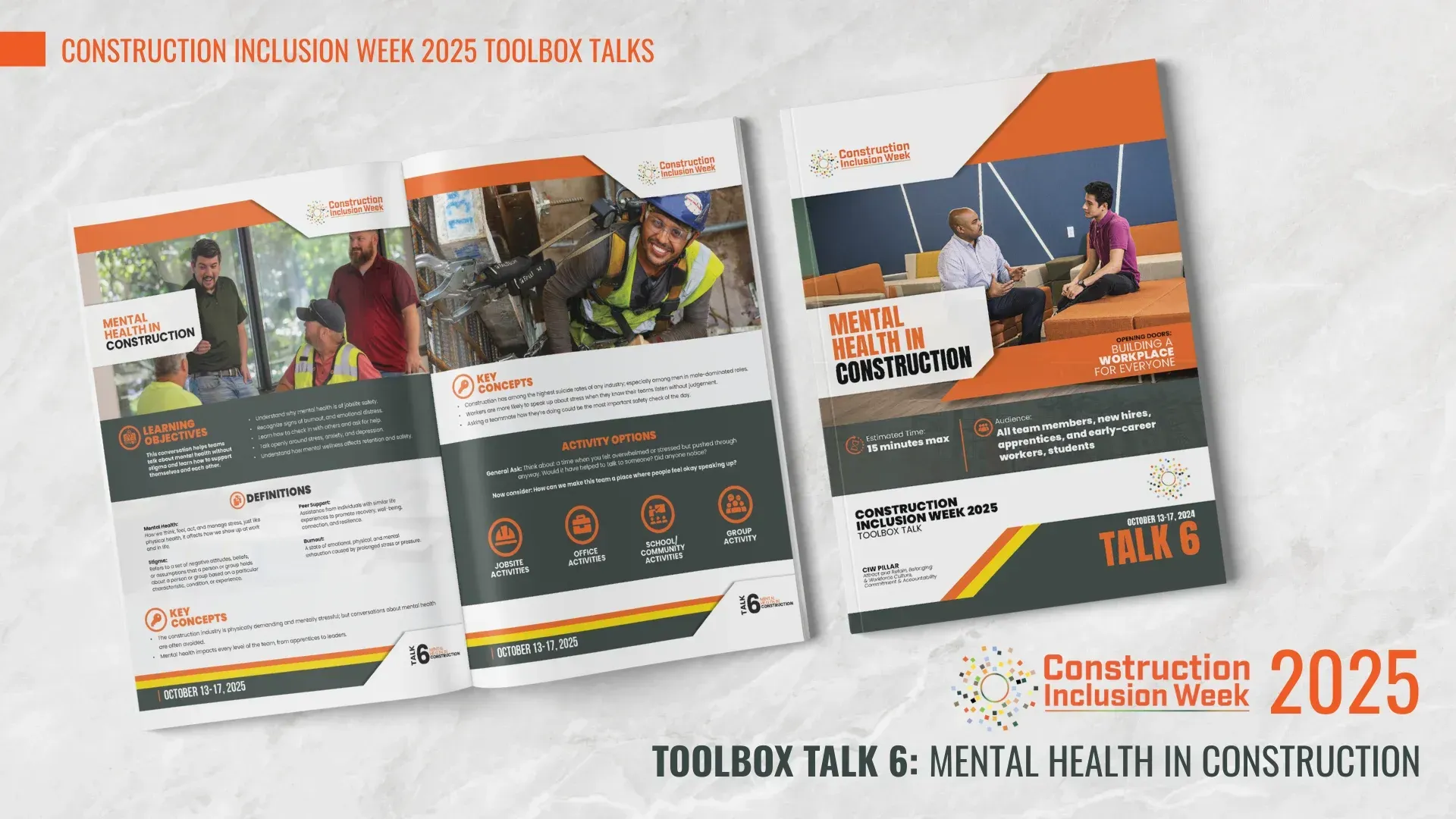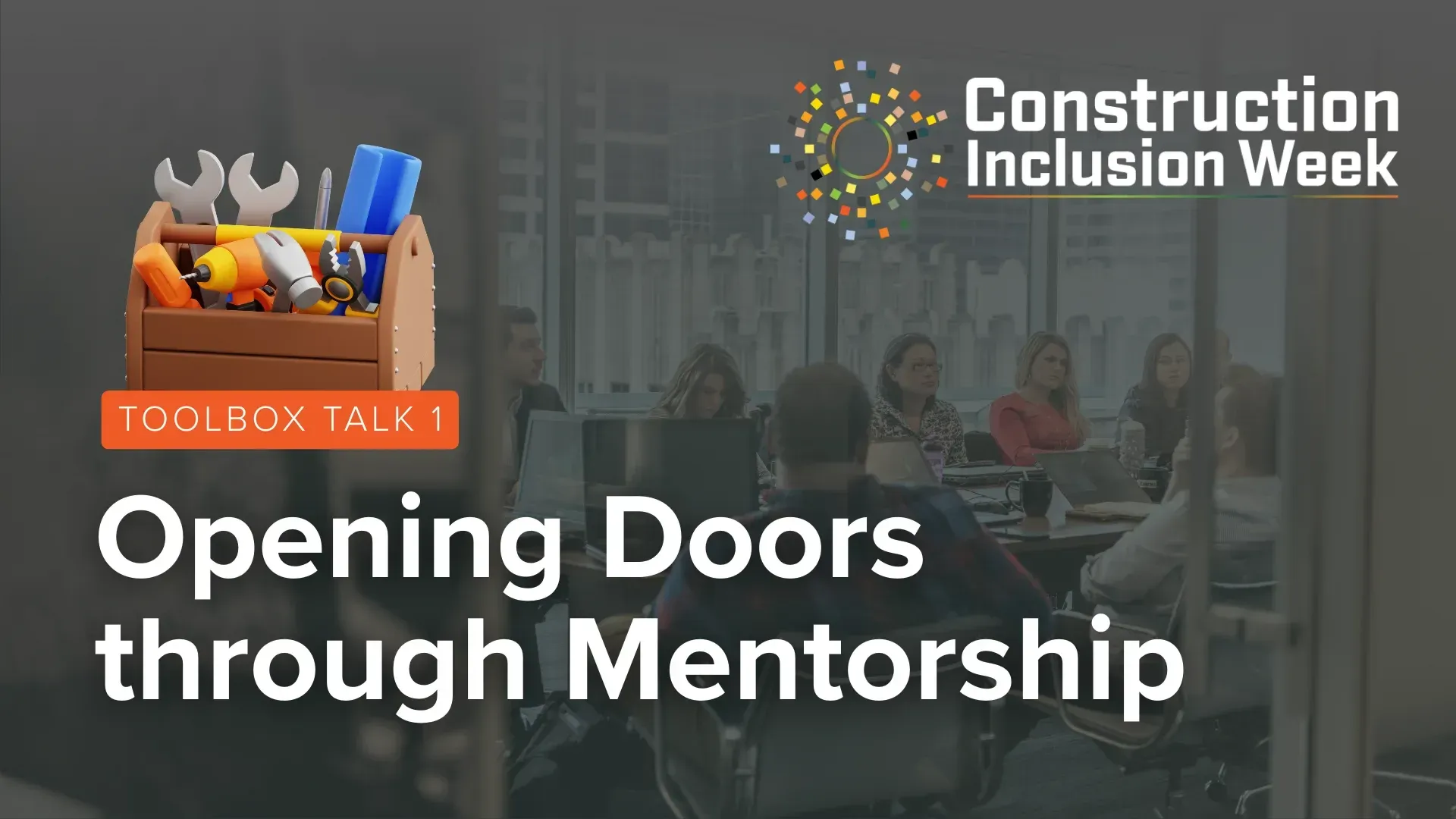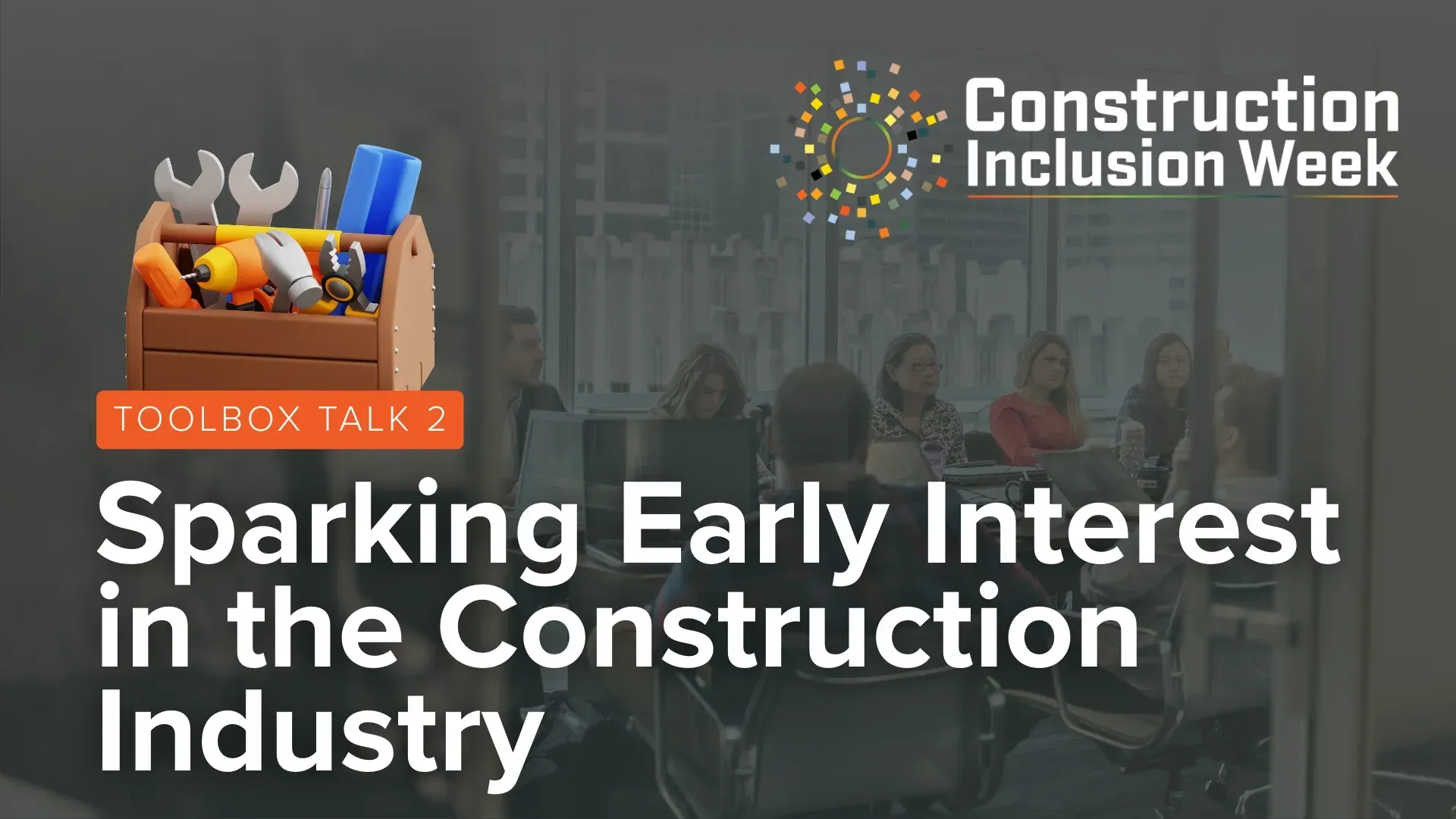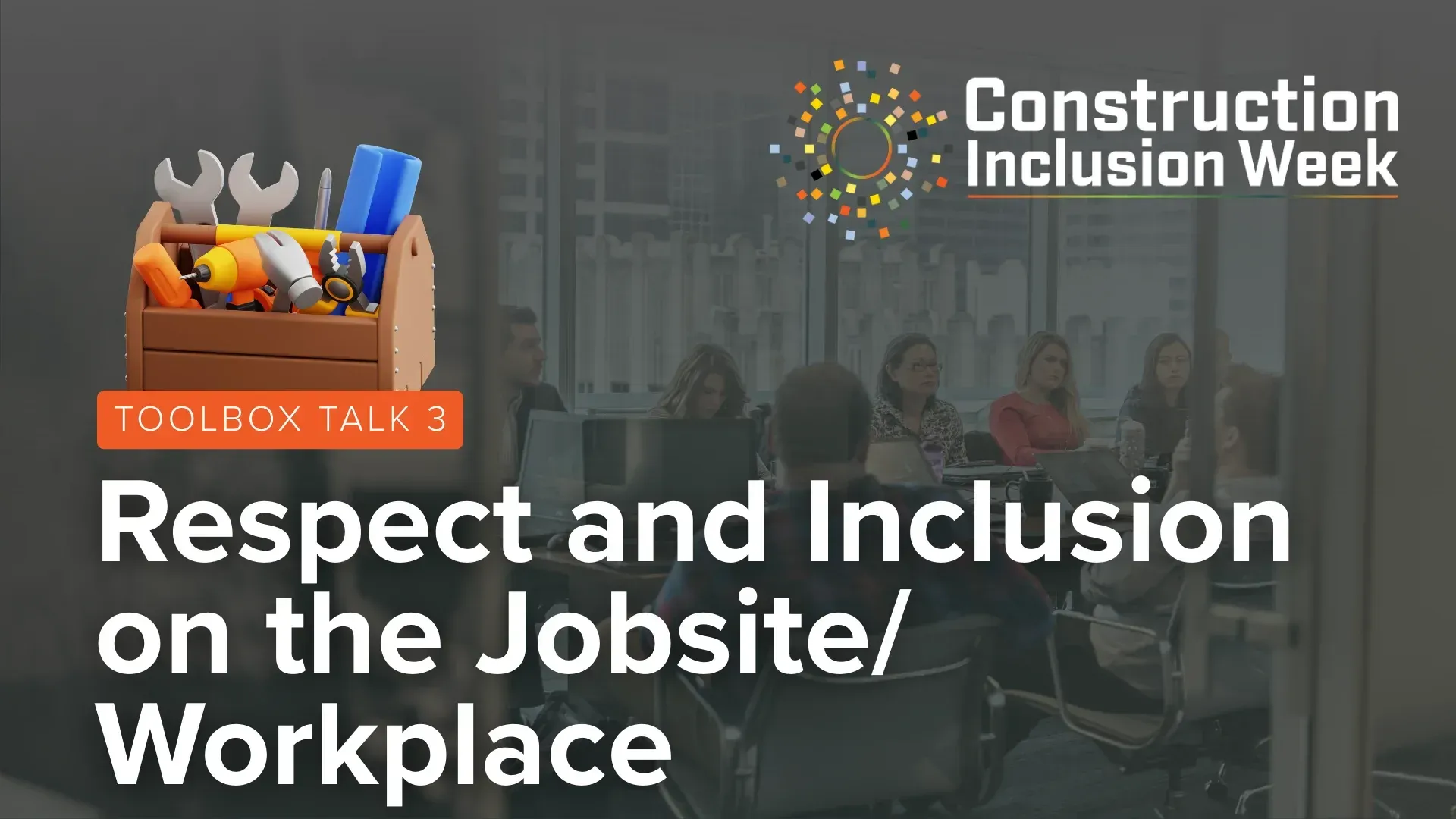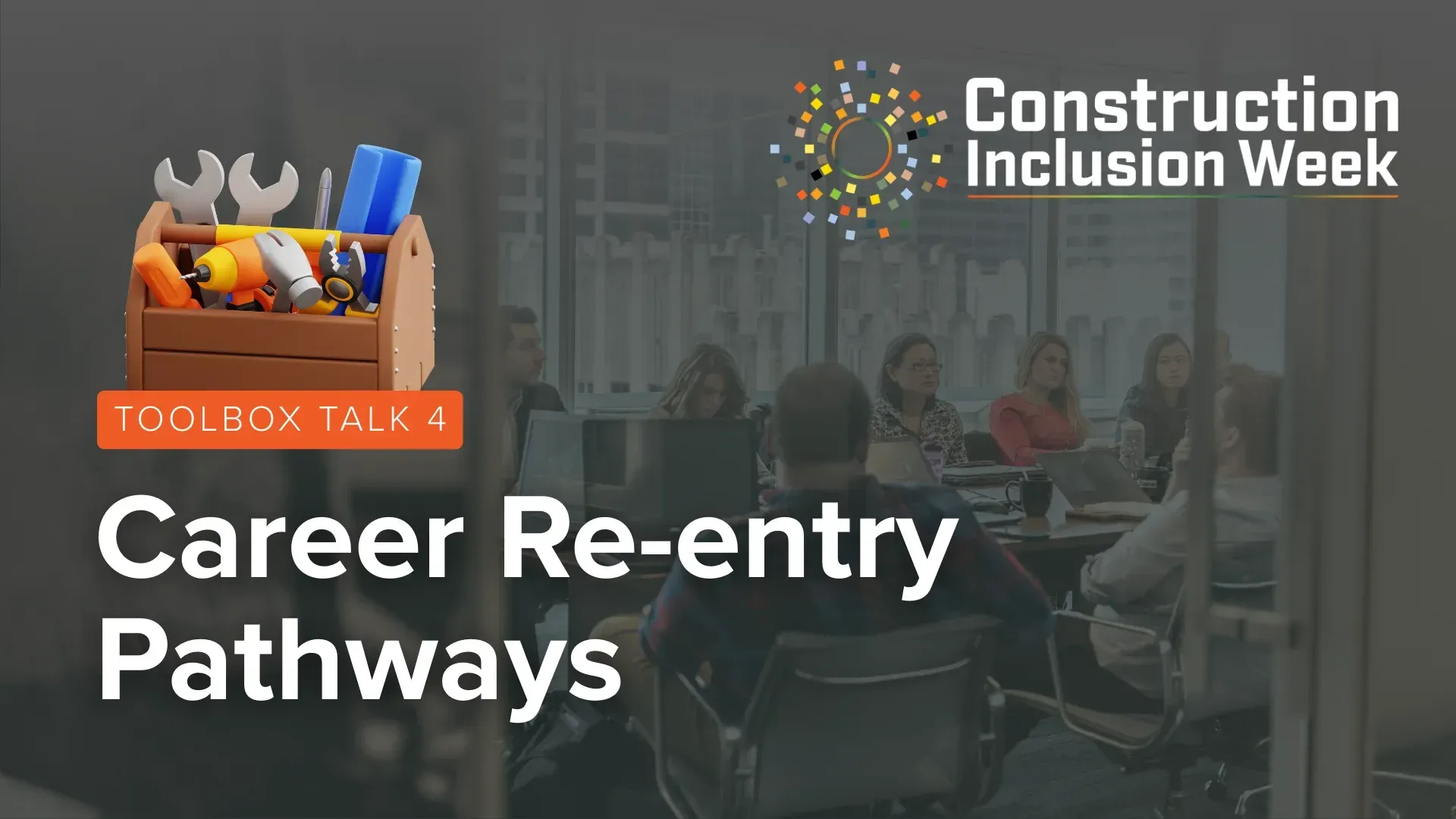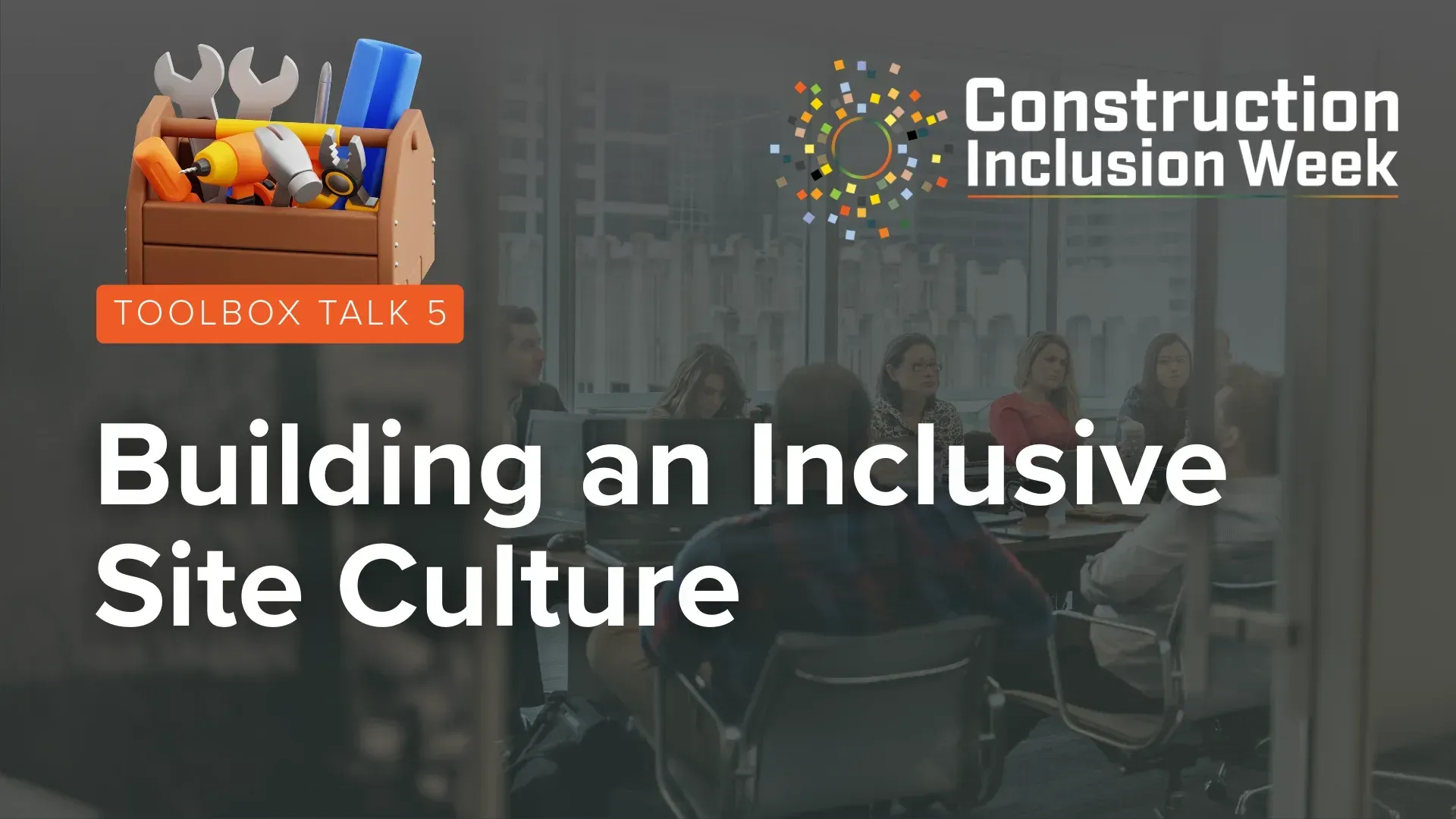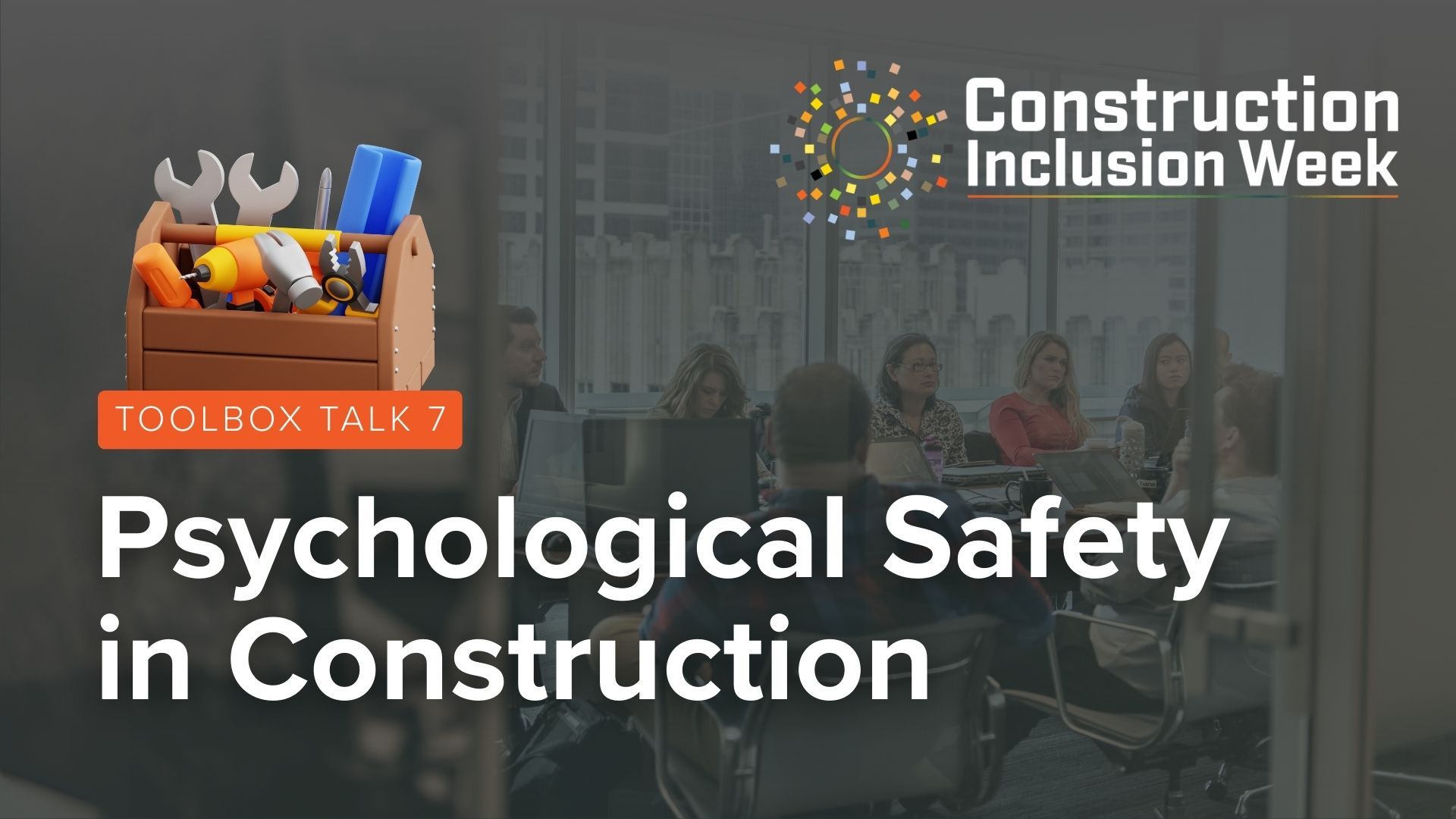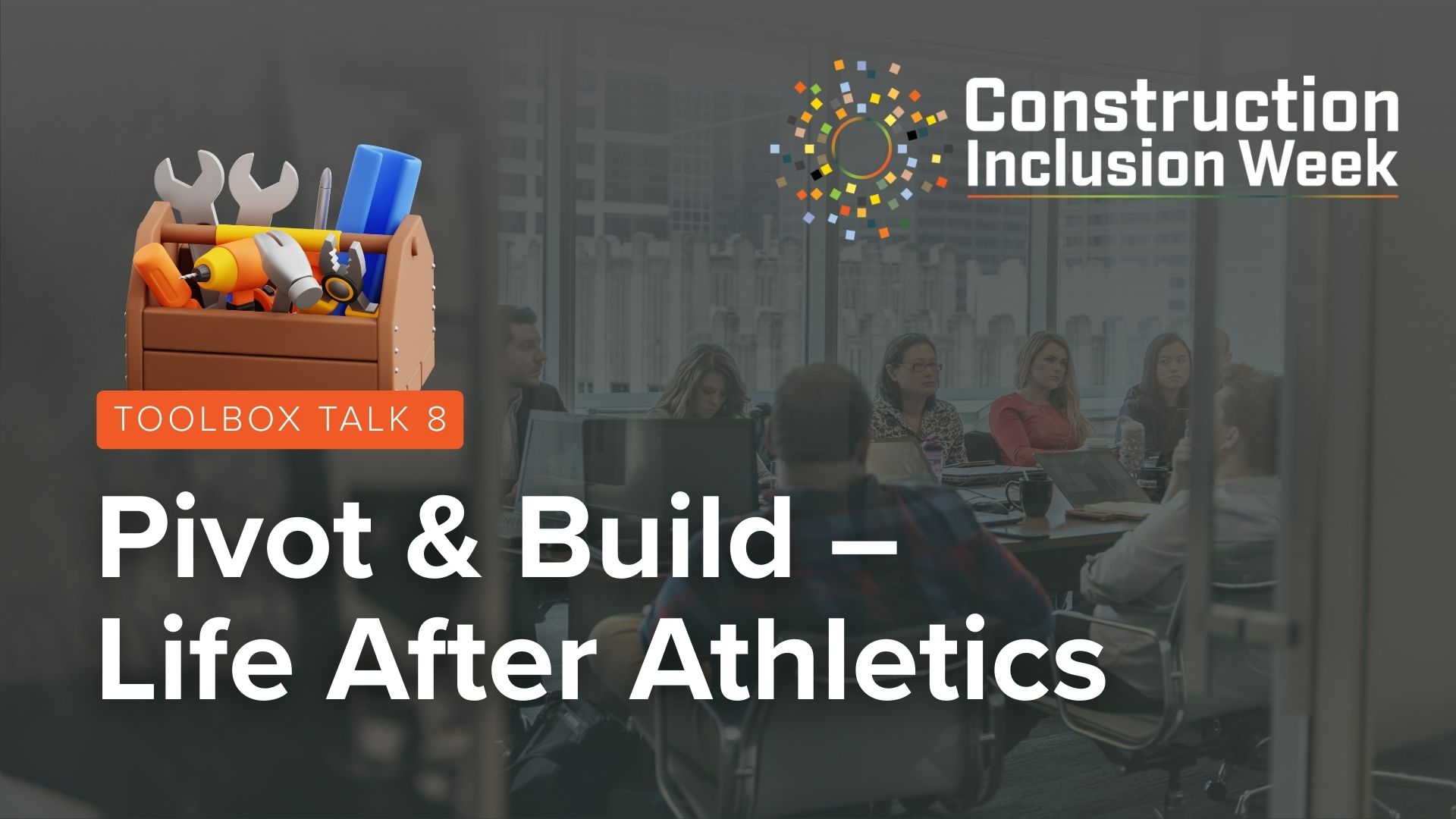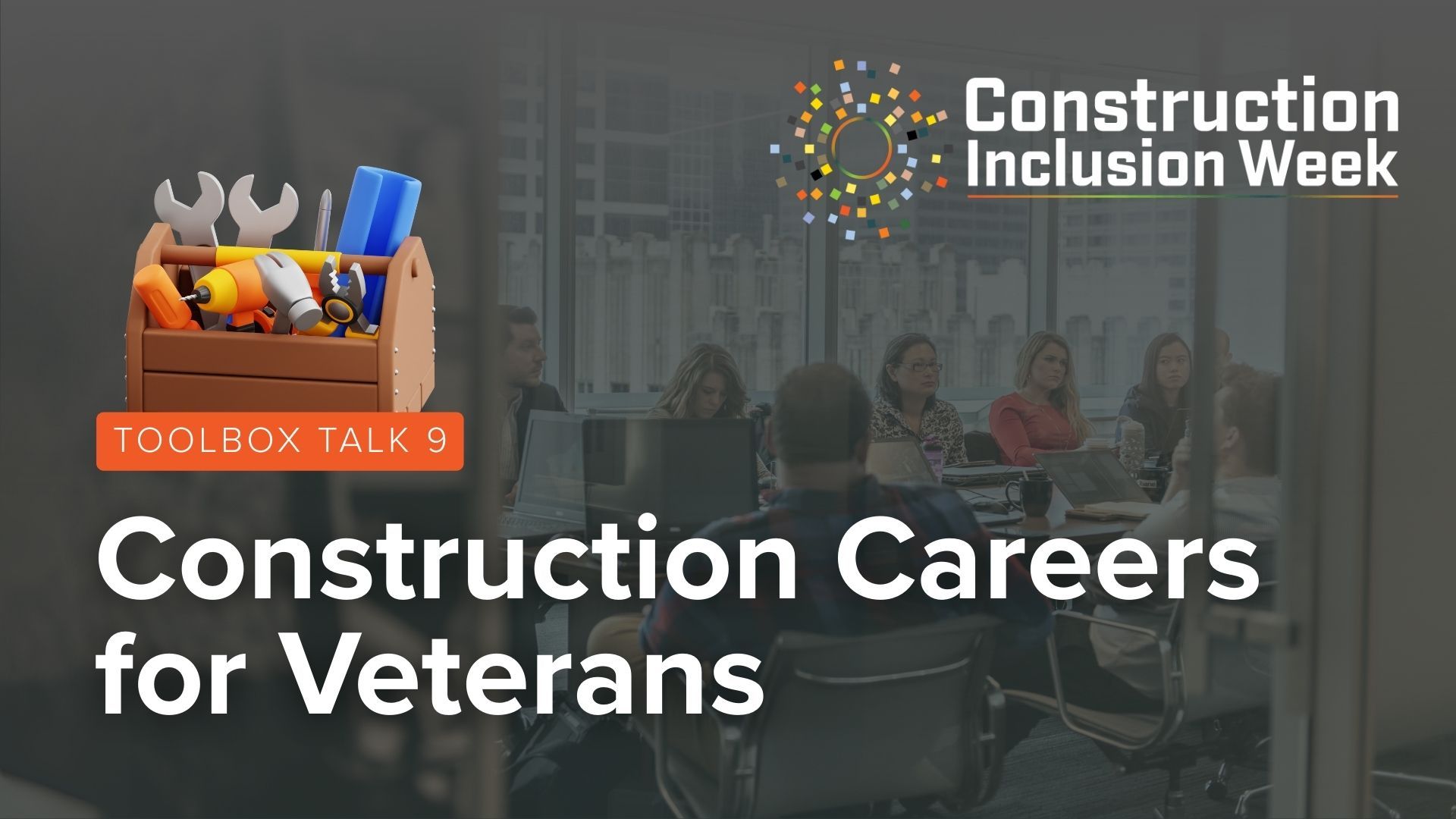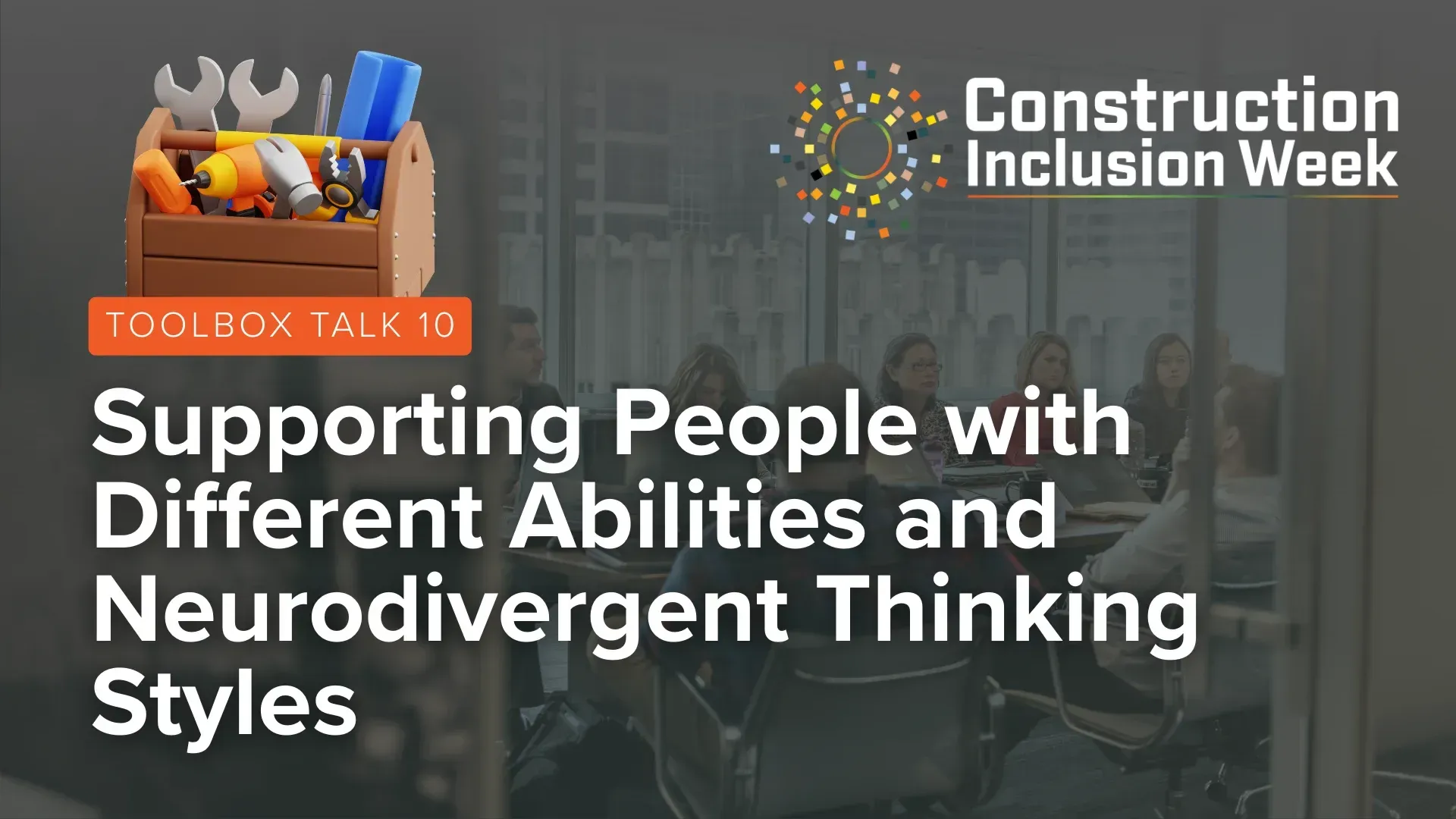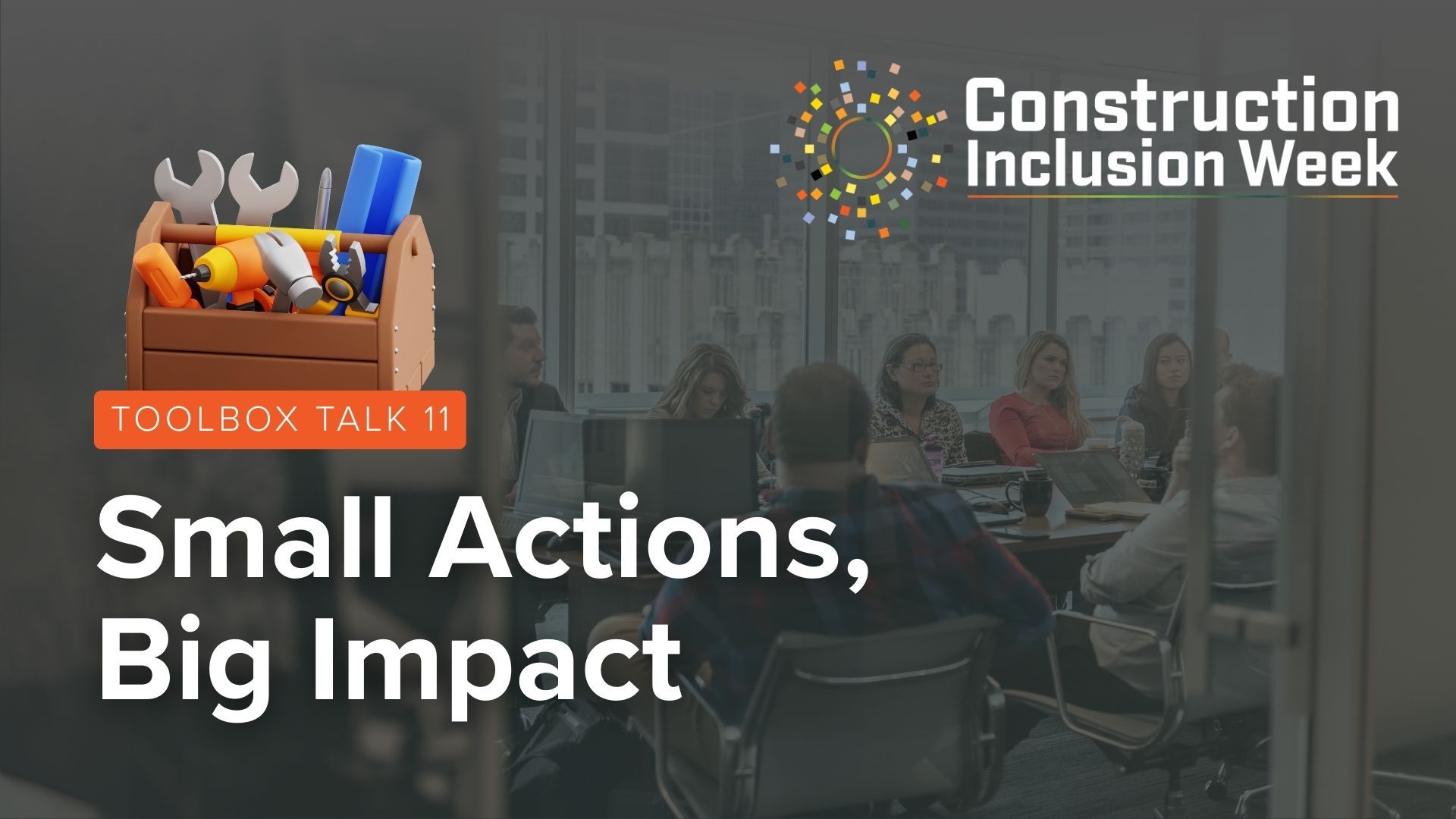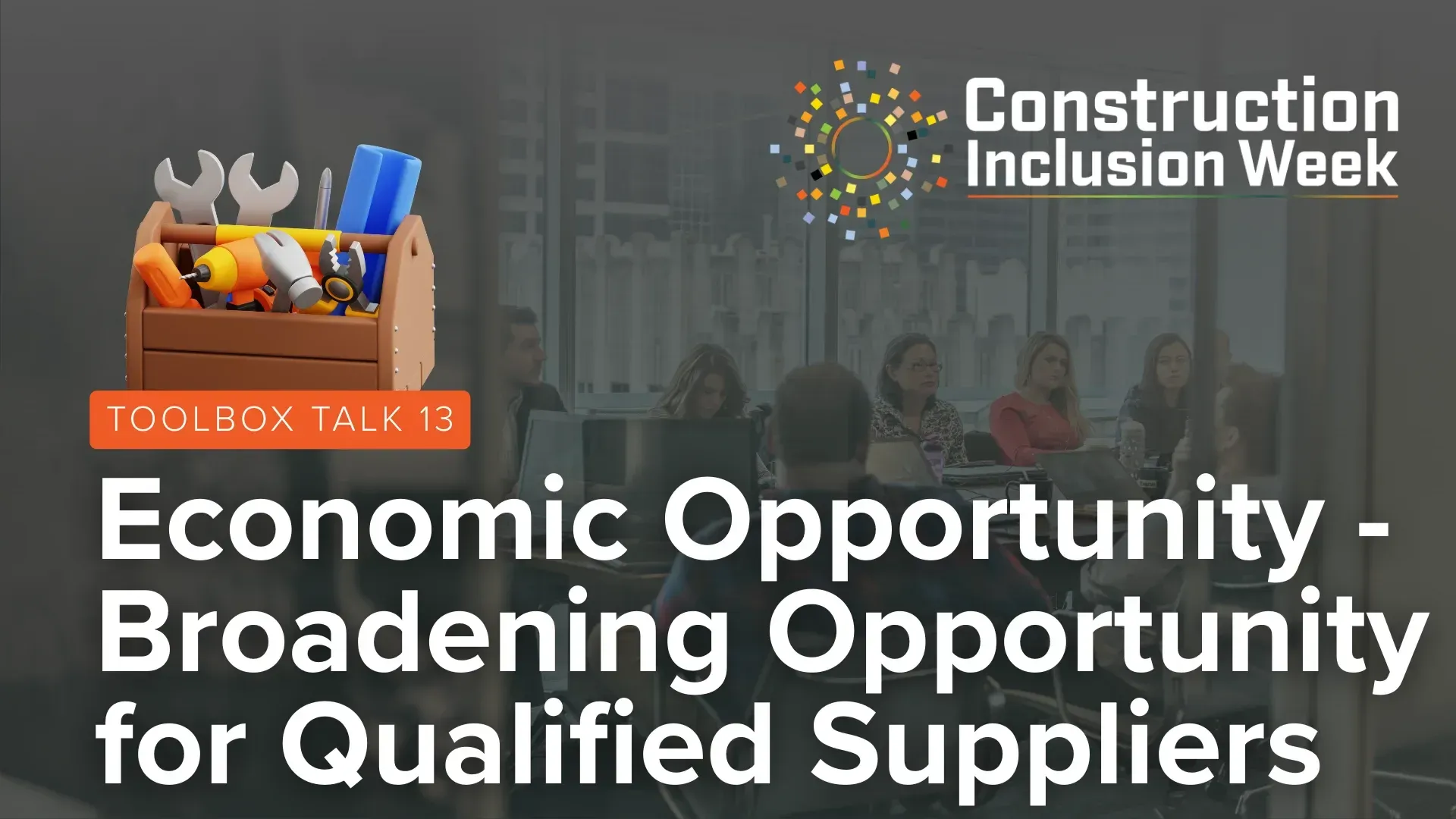Construction Inclusion Week 2025: Toolbox Talk 6
Mental Health in Construction
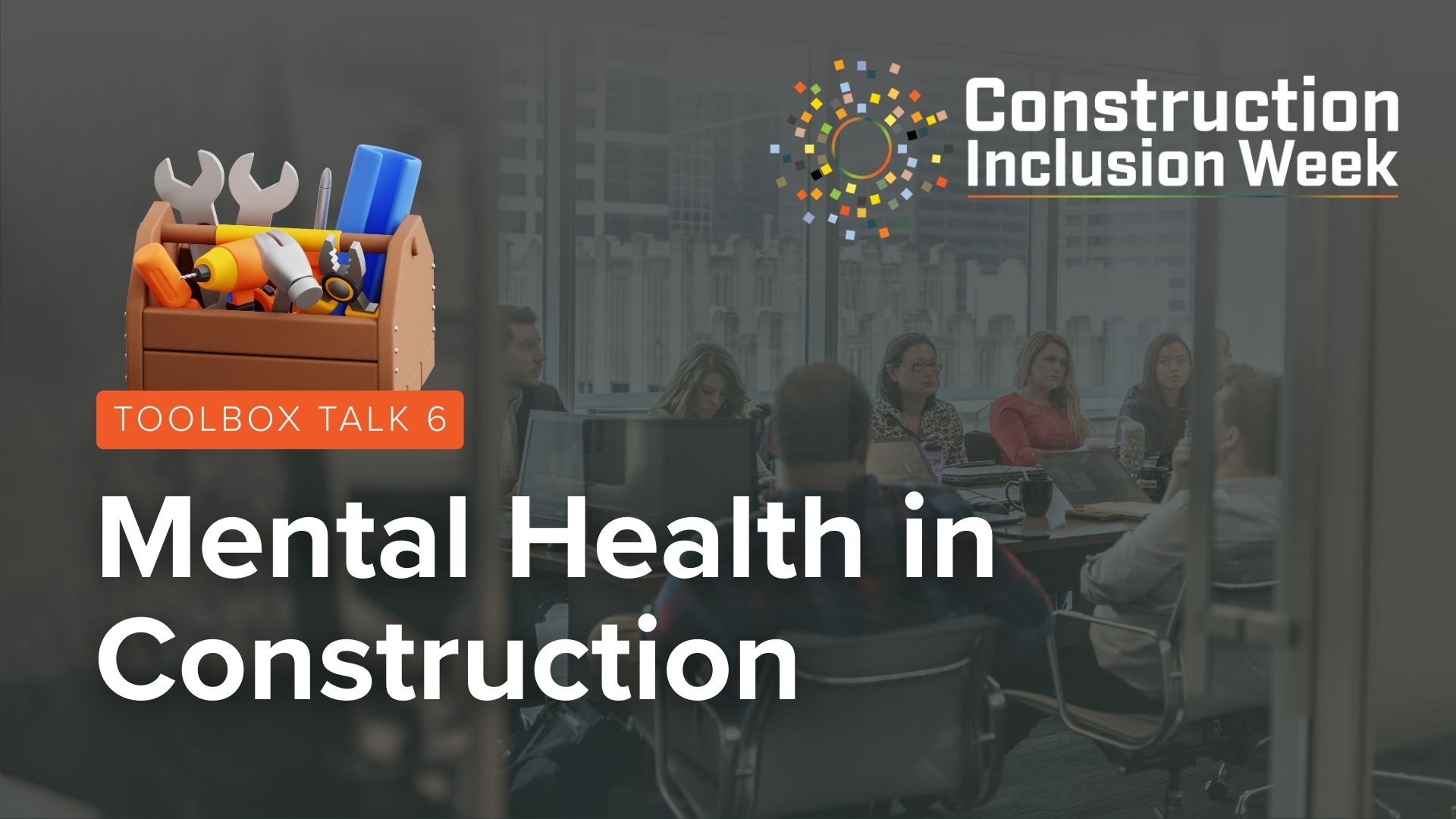
Learning to talk about mental health without stigma is a key part of keeping our teams safe.
This conversation helps you understand why mental well-being is a critical part of jobsite safety and how to support yourself and your crew. You'll learn how to spot signs of burnout and emotional distress in others, and get practical tips for checking in and asking for help when needed. The goal is to break the silence around stress, anxiety, and depression. By doing this, we connect mental wellness to better long-term retention and overall safety on every project.
PILLAR ALIGNMENT: Attract & Retain, Belonging & Workforce Culture, Commitment & Accountability
Get Started
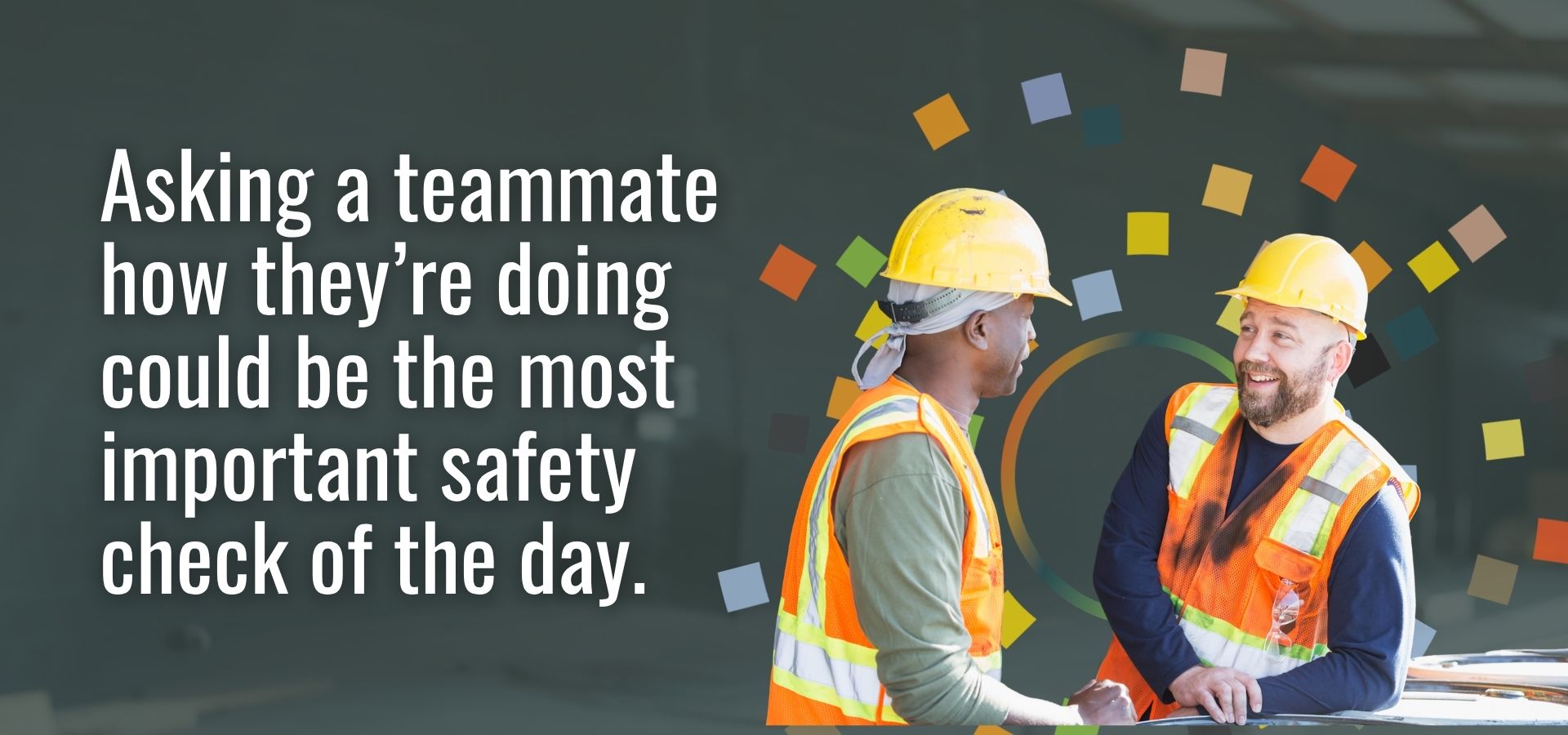
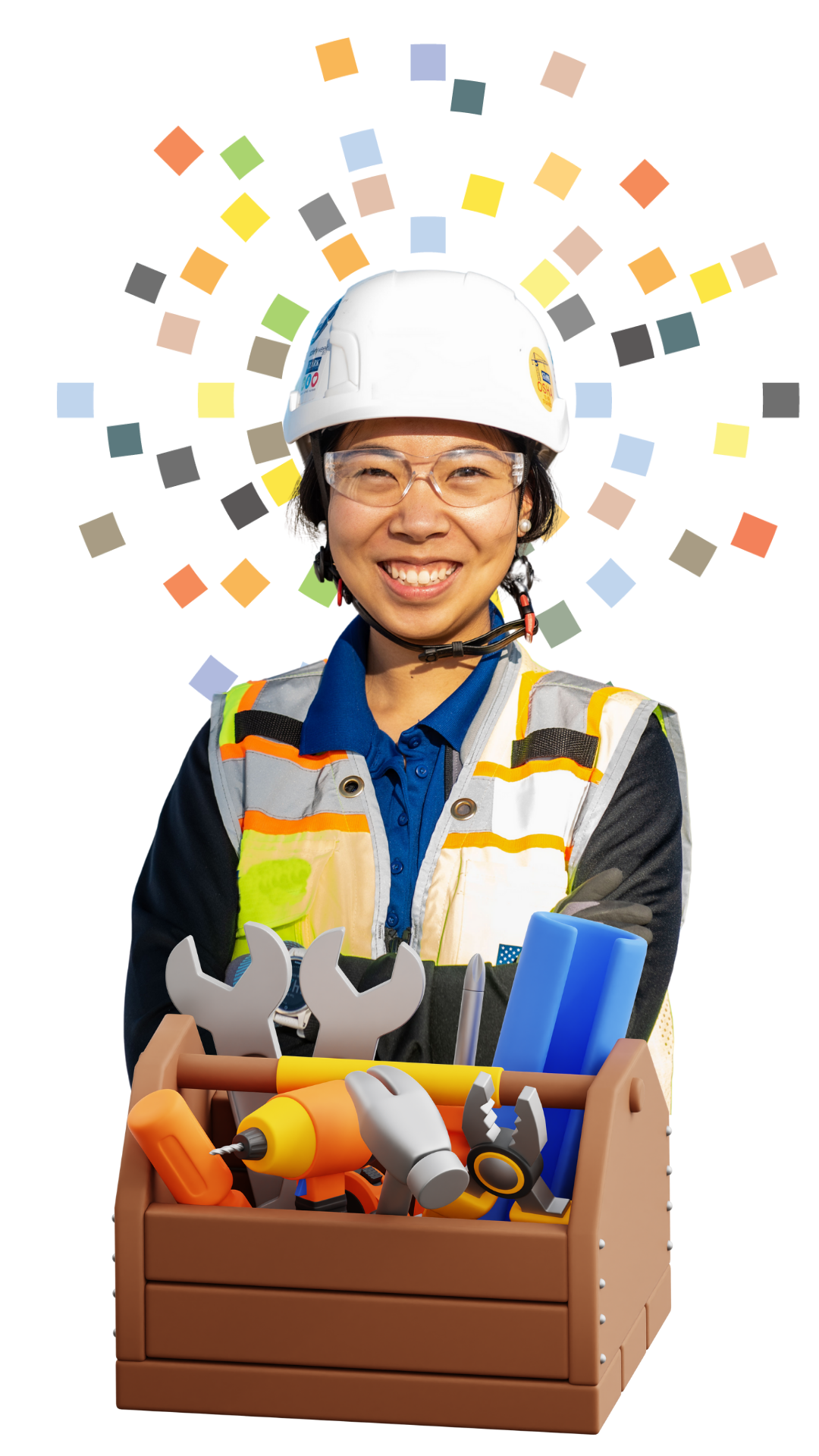
Sample Activity Options
JOBSITE ACTIVITY
Start a “Quiet Space” initiative. Create one area on site for short breaks or reset.
OFFICE ACTIVITY
Bring in a local Employee Assistance Program (EAP) or counselor for Q&A (anonymous questions allowed).
School/Community Activity
Co-host a youth mental safety day with short talks and role plays.
Group Activity
Go around and answer, what helps you reset when things feel off?
Discussion Questions
Just like we watch out for each other's physical safety on the jobsite, we need to look out for our mental well-being too. That’s why we want to create a jobsite where it's okay to not be okay. We'll talk about how to recognize signs that a teammate might be struggling and the practical ways we can offer support without being a counselor. The goal is to build a crew culture where everyone feels supported, so no one has to go it alone.
- Why do so many people stay silent about mental health?
- What are some signs that someone may be having a challenging time?
- How can we support a teammate who’s experiencing stress or burnout?
- How can we support others without acting like counselors?
- How can leaders reinforce the message that it’s OK not to be, OK?
